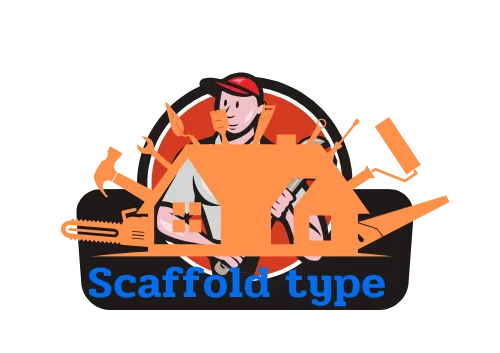Phone:
(+65)8319-0742
Unlocking the full potential of students’ minds begins with bolstering their critical thinking skills. Critical Thinking Scaffolds offer an innovative approach to cognitive development, fine-tuning learners’ abilities to address complex problems with clarity and confidence. By integrating tailored problem-solving strategies and solid cognitive scaffolding methods, educators are empowering students to navigate the intricate challenges of today’s academic and professional environments.
Key Takeaways
- Utilization of Critical Thinking Scaffolds enhances students’ cognitive capabilities.
- Effective cognitive scaffolding nurtures essential problem-solving strategies.
- Critical thinking skills are crucial for both academic success and real-world applications.
- Adopting scaffolded learning facilitates the gradual development of independence in learners.
- Structured support is a significant aspect of cultivating strong problem-solving abilities.
- Teachers play a pivotal role in guiding students through the complexity of Critical Thinking Scaffolds.
Understanding Scaffolding in Education
At the core of modern teaching strategies lies instructional scaffolding, a method that not only enhances independent thought but also fine-tunes a learner’s ability to tackle real-world challenges. Using instructional scaffolding, educators can effectively support students’ learning by incorporating critical elements such as modeling and practice, alongside various approaches like content, task, and material scaffolding.
Educational scaffolding is a tailored instructive approach where educators provide initial support to students, slowly reducing assistance as students become more capable and confident. This method is integral in promoting critical thinking techniques and self-sufficiency, ensuring learners can navigate complex concepts and apply knowledge effectively.
The Role of Scaffolding in Independent Learning
Scaffolded instruction is not just a teaching tool; it’s a foundational element in fostering independent learning. Through scaffolded learning, students are empowered to take ownership of their educational journey, transitioning from guided learning to autonomous problem-solving and critical analysis.
Real-World Applications of Educational Scaffolding
- Prepares students for unscripted challenges in professional environments.
- Cultivates adaptability and strategic problem-solving skills.
- Encourages the development of soft skills relevant to team collaboration.
Implementing Scaffolding from Preschool to University Level
Scaffolded education begins in the early stages of childhood and continues into higher education, proving its versatility and value at each academic tier.
| Level | Scaffolding Goal | Techniques Used |
|---|---|---|
| Preschool | Social & Basic Cognitive Skills | Storytelling, Role Play |
| Elementary School | Foundational Knowledge & Inquiry | Group Projects, Interactive Learning |
| High School | Advanced Critical Thinking & Analysis | Research Assignments, Peer Review |
| University | Expertise & Specialized Skills | Internships, Thesis Projects |
The need for scaffolded instruction transcends academic boundaries, supporting the evolution of students’ capabilities from their formative years well into their pursuit of specialized knowledge and beyond.
The Relationship Between Scaffolds and Critical Thinking Skills

Implementing a critical thinking framework in educational settings is a complex but rewarding endeavor. By employing scaffolds, educators enhance the cognitive development of students, creating a bridge between new and existing knowledge. Lynn Pasquerella, a leading advocate for liberal education, stresses the need for deliberate scaffolding to cultivate essential skills for the ever-changing demands of the workforce.
In the context of higher education, problem-solving strategies are developed through challenges that mimic real-life scenarios. Here’s a breakdown of how scaffolds impact cognitive skills:
- They guide students through complex concepts, ensuring thorough understanding.
- Scaffolds act as stepping stones for students to achieve independent thinking.
- They encourage a deeper dive into subjects, promoting prolonged engagement and retention.
These elements form the groundwork for a robust critical thinking framework, essential for both personal growth and professional success. To illustrate the efficacy of scaffolding in facilitating cognitive maturity, below is a comparative table detailing tasks with and without scaffolding support:
| Task | With Scaffolding | Without Scaffolding |
|---|---|---|
| Research Paper | Structured guidance on sourcing information, critical analysis, and paper organization | General instructions, leading to potential information overload and unclear analysis |
| Group Project | Clearly defined roles and objectives, fostering collaboration and ownership | Ambiguous roles leading to imbalance of work and lack of direction |
| Math Problem Sets | Step-by-step problem-solving frameworks and peer review opportunities | Isolated practice with little to no peer learning or process examination |
| Philosophical Debate | Background resources and argumentation guidelines to prime critical reflection | Assumption of prior knowledge, possibly deterring in-depth discussion and exploration |
Thus, scaffolds seamlessly intertwine with the students’ journey of cognitive development, equipping them with tools and confidence to approach problems thoughtfully and creatively. By facilitating progression from simple recognition to complex creation and evaluation, educators employing scaffolding patently honor their commitment to enhancing lifelong learning and critical inquiry.
Incorporating Critical Thinking Scaffolds in Lesson Design
When developing lesson plans, the integration of scaffolded learning is crucial for fostering an environment where critical thinking techniques flourish. By contextualizing the subject matter, educators allow students to forge connections between their studies and personal experiences, solidifying their grasp of the material and promoting long-term retention.
The Importance of Contextual Learning
Contextual learning stands as a cornerstone of scaffolded instruction, encouraging learners to apply their newfound knowledge in meaningful ways. This approach goes beyond abstract theory, using concrete examples and applications that resonate with students on a personal level, thereby enhancing their educational journey.
Differentiating Scaffolding From Other Teaching Methods
Differentiation tailors instruction to meet the diverse needs of learners, while scaffolding provides a supportive framework that is gradually removed as students gain independence. Scaffolded instruction enhances the learning process through strategic support that diminishes as the learner’s competency grows, allowing them to become self-sufficient thinkers.
Zone of Proximal Development in Scaffolded Learning
The Zone of Proximal Development (ZPD) acts as a guide for educators in scaffolded learning. It defines the range of tasks that a learner can perform with the guidance of a more knowledgeable other, such as a teacher or peer. Within this zone, scaffolded instruction enables the learner to tackle challenges that would be insurmountable alone, fostering the development of higher-level thinking skills.
| Teaching Strategy | Features | Benefits |
|---|---|---|
| Contextual Learning | Real-world examples Personal relevance | Increased engagement Deeper understanding |
| Scaffolding | Supportive framework Gradual release of responsibility | Develops independence Encourages problem-solving |
| Zone of Proximal Development | Learner’s potential with support Guided skill advancement | Targeted instruction Maximized learning growth |
Incorporating these elements into lesson planning not only enriches the educational experience but equips students with the skills necessary to navigate an increasingly complex world. With careful application of scaffolded instruction, educators can ensure that the journey through the Zone of Proximal Development is both rewarding and transformative.
Strategies for Enhancing Critical Thinking Through Scaffolding

The pursuit of strengthening critical thinking skills in learners is an essential aspect of modern education strategies. Scaffolding serves as a robust framework, supporting cognitive development while encouraging students to reach new heights in their analytical abilities. As educators, implementing these practical tools can transform the classroom into a catalyst for developing critical thinkers, ready to tackle the complexities of the world.
Modeling and Demonstrations as Scaffolding Tools
Education professionals recognize the efficacy of modeling and demonstrations in establishing clear expectations and laying the groundwork for students to emulate. Such tools not only clarify the learning goals but also demonstrate the intricate steps involved in critical analysis. For instance, the use of case studies in a focused area can vividly illustrate problem-solving in action, turning abstract concepts into tangible skills.
The Power of Think Alouds in Cognitive Development
Think alouds stand out as powerful cognitive scaffolding tools, revealing the inner workings of problem-solving. Through verbalizing their thoughts, educators offer a narrative of their reasoning, providing students with a roadmap of the thought process. This verbal exploration of questions and hypotheses offers a direct insight into the complexities of evaluating and synthesizing information â a cornerstone in nourishing critical thinking skills.
Connecting Curriculum to Students' Lives
In an attempt to bring curriculum content alive, the strategy of connecting learning material to a student’s own experiences cannot be understated. Tailoring education to involve real-life contexts fortifies the relevancy of skills being developed and helps in embedding these critical thinking scaffolds into their cognitive toolkit. As students find personal significance in the material, their engagement and retention dramatically improve, fostering a deeper, autonomous pursuit of knowledge.
Enhancing critical thinking through scaffolding does not require a one-size-fits-all approach but rather a customizable and responsive toolbox. The scaffolding strategies discussed here offer educators the means to support student growth in reasoning and analysis, which are crucial in an age dominated by rapid change and information overflow. By conscientiously applying these techniques, educators pave the path toward a future of confident, independent thinkers.
Critical Thinking Scaffolds

Delving into the concept of critical thinking scaffolds, educators acknowledge the variety of strategies that contribute to the honing of students’ problem-solving abilities. This educational approach offers a supportive structure designed to steadily enhance cognitive skills, promoting an environment where scaffolded learning is the norm. Building these frameworks requires an understanding of how knowledge is constructed, leading to more sophisticated problem-solving strategies that students can carry forward into their academic and professional lives.
Sophisticated educational scaffolding provides students with clear milestones and checkpoints, aligning with the principle that learning is best achieved through practical application. Such scaffolding ensures students can navigate complex ideas or tasks, gradually reducing the supports as they become more confident and self-sufficient thinkers. This method implicitly encourages learners to internalize critical thinking strategies and apply them independently both inside and outside the classroom.
- Initial support with structured guidance emphasizes the foundational stages of learning.
- Progression to collaborative efforts promotes peer interaction and shared problem-solving experiences.
- Gradual release of responsibility empowers students to take control of their learning journey.
Below is an illustration showing the benefits of various critical thinking scaffolds in educational environments:
| Scaffold Type | Benefits | Applications |
|---|---|---|
| Question prompts | Encourages in-depth thinking and analysis | Discussions, Essays |
| Graphic organizers | Assists in structuring thoughts and information | Research projects, Study guides |
| Think-pair-share | Fosters collaboration and collective solution-finding | Class activities, Group assignments |
| Real-world scenarios | Enhances applicability and relevancy of concepts | Case studies, Internships |
| Feedback loops | Provides opportunities for reflection and improvement | Peer reviews, Mentorships |
Properly implemented, these critical thinking scaffolds transform the educational landscape by equipping students with robust problem-solving strategies and laying the foundation for lifelong learning and adaptabilityâa testament to the transformative power of scaffolded learning and educational scaffolding.
Effective Use of Scaffolding to Foster Deep Understanding
Scaffolded instruction epitomizes a strategic educational foundation supporting students as they journey toward complex comprehension. The success of this method hinges on the application of a robust cognitive scaffolding strategy, which equips learners with the necessary tools to delve deeply into subject matter. Key to this approach is the deployment of strong critical thinking frameworks that challenge young minds to connect, analyze, and reflect on the material presented to them.
Educational scaffolding can often be visualized in the classroom setting through the incorporation of graphic organizers and focused vocabulary instruction. Providing “think time” is not simply a pause in lecture but a deliberate moment for synthesis and reflection, which encourages independent thought processes. Additionally, educators are tasked with formulating inquiries that guide open-ended discussions ensuring that learning extends beyond rote memorization to a significant internalization of concepts.
| Scaffolding Strategy | Purpose | Examples |
|---|---|---|
| Front-Loading Vocabulary | To equip students with the necessary language before engaging with complex texts. | Word walls, flashcards, interactive games |
| Graphic Organizers | To help students structure their thoughts and understand relationships between concepts. | Venn diagrams, flow charts, concept maps |
| Think Time | To allow students to ponder and process information, aiding retention and understanding. | Independent reflection, journaling, group discussion |
- Design tasks with clear, articulated learning objectives.
- Showcase exemplars of expected outcomes to model success.
- Foster a higher level of student engagement through cognitive challenges.
In summary, the art of delivering educational scaffolding lies in the careful balance between guidance and independence, ensuring each learner reaches a level of mastery necessary for their cognitive development. With active involvement in scaffolded instruction, we can support our students to not only understand but also apply and evaluate new information in a way that spurs continual intellectual growth.
Assessing and Adjusting Scaffolding Techniques for Optimal Learning
Ensuring the beneficial impact of scaffolded learning, it is vital to continually assess and refine our scaffolding strategies. A holistic approach involves not just a thorough analysis of the effectiveness of these techniques but also a recognition of the unique requirements of each student. By optimizing the educational scaffolding provided, we pave the way for the nurturing of critical thinking skills and independent analytical prowess.
Cognitive scaffolding is a nuanced process that demands attentive adjustments to maximize a student’s potential. The goal is not to offer unlimited assistance but to foster the ability to think critically and solve problems independently. To accomplish this, instructional methodologies must evolve in real-time, reacting to student feedback and performance metrics.
Measuring the Effectiveness of Scaffolding Interventions
Evaluating the success of scaffolding requires attention to tangible outcomes and behavioral developments. Analysis tools such as regular assessments or observation of classroom participation can yield insights into how these critical thinking techniques are shaping learning experiences and boosting confidence among learners.
Adjusting Scaffolding to Meet Individual Needs
Every learner marches to the beat of their own drum, necessitating personalized adjustments to our scaffolding methods. It highlights the importance of flexible educational scaffolding tailored to meet divergent trajectories in cognitive and skills development.
Timing and Intensity of Support in Scaffolded Instruction
Effective instructional design calibrates the timing and intensity of support provided to students. Scaffolded learning is not a one-size-fits-all solution; as students demonstrate mastery, the scaffolds can be gradually withdrawn to encourage independent learning behaviors and strengthen critical thinking skills.
| Phase of Instruction | Type of Support | Adjustment Based on Learner Needs | Outcome |
|---|---|---|---|
| Introduction | High Support | Varied pacing, more examples | Understanding foundational concepts |
| Practice | Moderate Support | Targeted feedback, questioning | Enhancing skill application |
| Mastery | Minimal Support | Peer learning, self-assessment | Independent problem-solving |
The table demonstrates the adaptive echo of scaffolded learning, illustrating how educators can optimize support to enhance the student’s journey towards autonomy and refined critical thinking skills. Through a combination of ongoing assessment and learner-specific adjustments, scaffolding evolves from being merely a teaching technique to a dynamic pathway for cognitive empowerment.
Conclusion
In the realm of education, Critical Thinking Scaffolds serve as a cornerstone for nurturing the cognitive development of students, equipping them with robust problem-solving strategies that are crucial in today’s multifaceted world. By tailoring educational support to the unique learning journey of each student, scaffolds promote a substantial understanding and encourage learners to engage in independent reflection and analysis.
The strategic application of educational scaffolding significantly contributes to the formation of critical thinking skills, preparing students not just for academic success, but also for their future professional endeavors. As educators continue to implement these frameworks, they mold students who are better equipped to confront the dynamic challenges they will inevitably encounter throughout their careers and personal lives.
In sum, the future hinges on our ability to think critically, problem-solve efficiently, and adapt continuously. As such, educational scaffolds do not simply support academic achievement; they lay the foundation for a lifetime of learning and adaptability. Through persistent refinement and adaptation of teaching strategies, educators play a pivotal role in shaping the minds that will navigate and triumph over the complexities of tomorrow’s landscape.
FAQ
What are Critical Thinking Scaffolds?
Critical Thinking Scaffolds are educational tools that support cognitive development and enhance problem-solving strategies. They involve structured support that helps students build critical thinking skills over time.
How does educational scaffolding support independent learning?
Educational scaffolding empowers independent learning by providing temporary support that gradually decreases as students become more proficient, ultimately fostering self-reliance and confidence.
In what ways can educational scaffolding be applied to real-world situations?
Educational scaffolding can be applied to real-world situations through practical projects, problem-solving tasks, and activities that require students to apply learned principles and skills outside the classroom environment.
When should scaffolding instruction begin in education?
Scaffolding instruction should begin as early as preschool and can be adapted and continued through higher education levels, enhancing a studentâs ability to think critically and solve problems effectively.
How does scaffolding differ from other teaching methods?
Scaffolding differs from other teaching methods in its focus on breaking down learning into manageable segments with structured support, while also being connected to the Zone of Proximal Development, which helps identify tasks that learners can accomplish with assistance.
What role does the Zone of Proximal Development play in scaffolded learning?
The Zone of Proximal Development (ZPD) plays a central role in scaffolded learning by identifying the range of tasks that students can perform with guidance, which informs the scaffolding process and level of support required.
What are some effective scaffolding strategies for enhancing critical thinking?
Effective scaffolding strategies for enhancing critical thinking include modeling and demonstrations, using think-aloud techniques to reveal thinking processes, and connecting the curriculum to students’ personal experiences.
How do educators measure the effectiveness of scaffolding interventions?
Educators can measure the effectiveness of scaffolding interventions by evaluating student engagement, performance, and progress in achieving learning objectives, and by observing the development of independent problem-solving skills.
What is involved in adjusting scaffolding to individual student needs?
Adjusting scaffolding to individual student needs may involve varying the structure, timing, and intensity of instructional support, taking into account each studentâs learning pace and understanding to maximize effectiveness.
What considerations should be taken into account regarding the timing and intensity of support in scaffolded instruction?
When considering timing and intensity of support in scaffolded instruction, educators should aim for a balance that provides enough assistance to challenge students without overwhelming them, gradually reducing help as students gain independence.

















